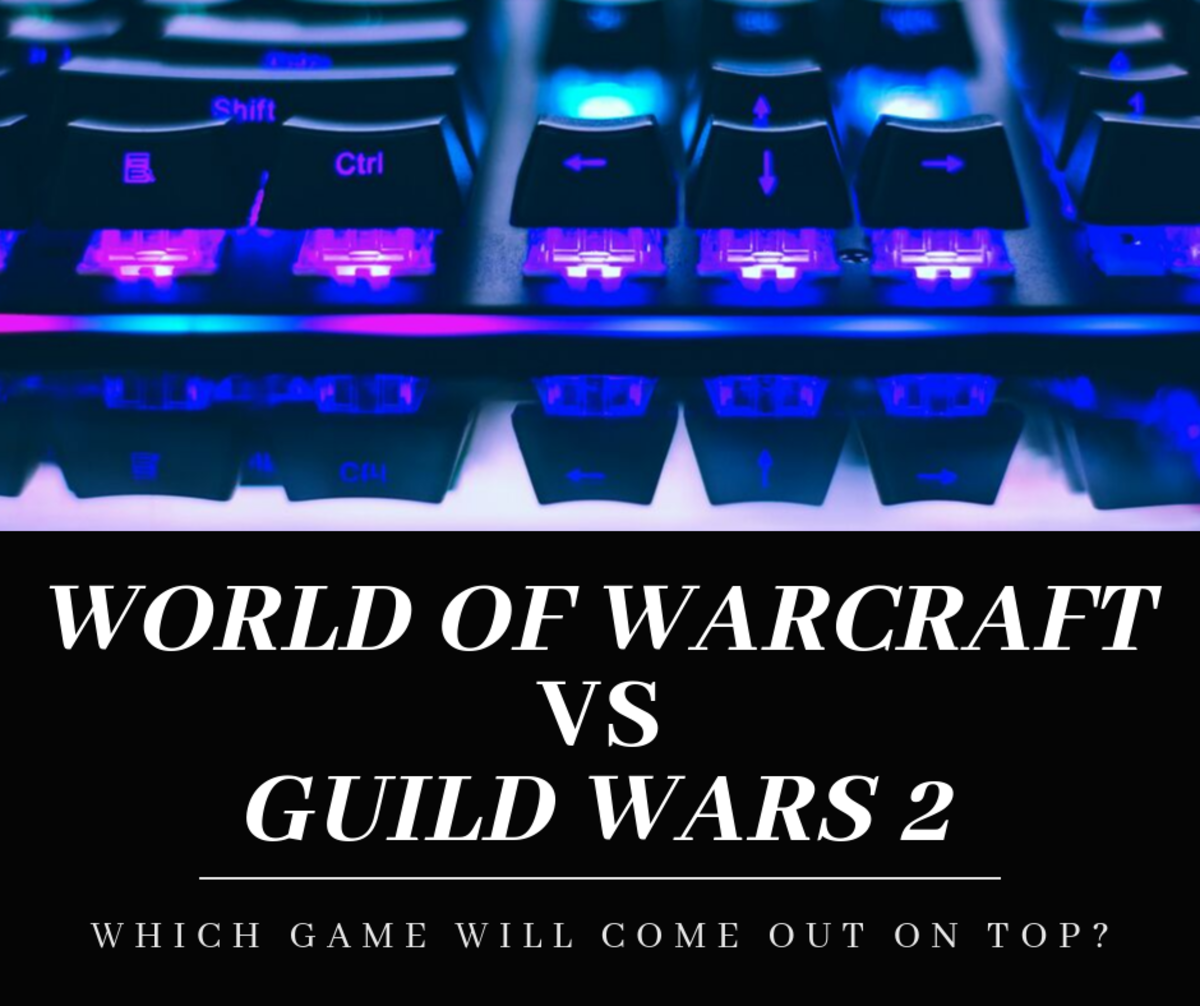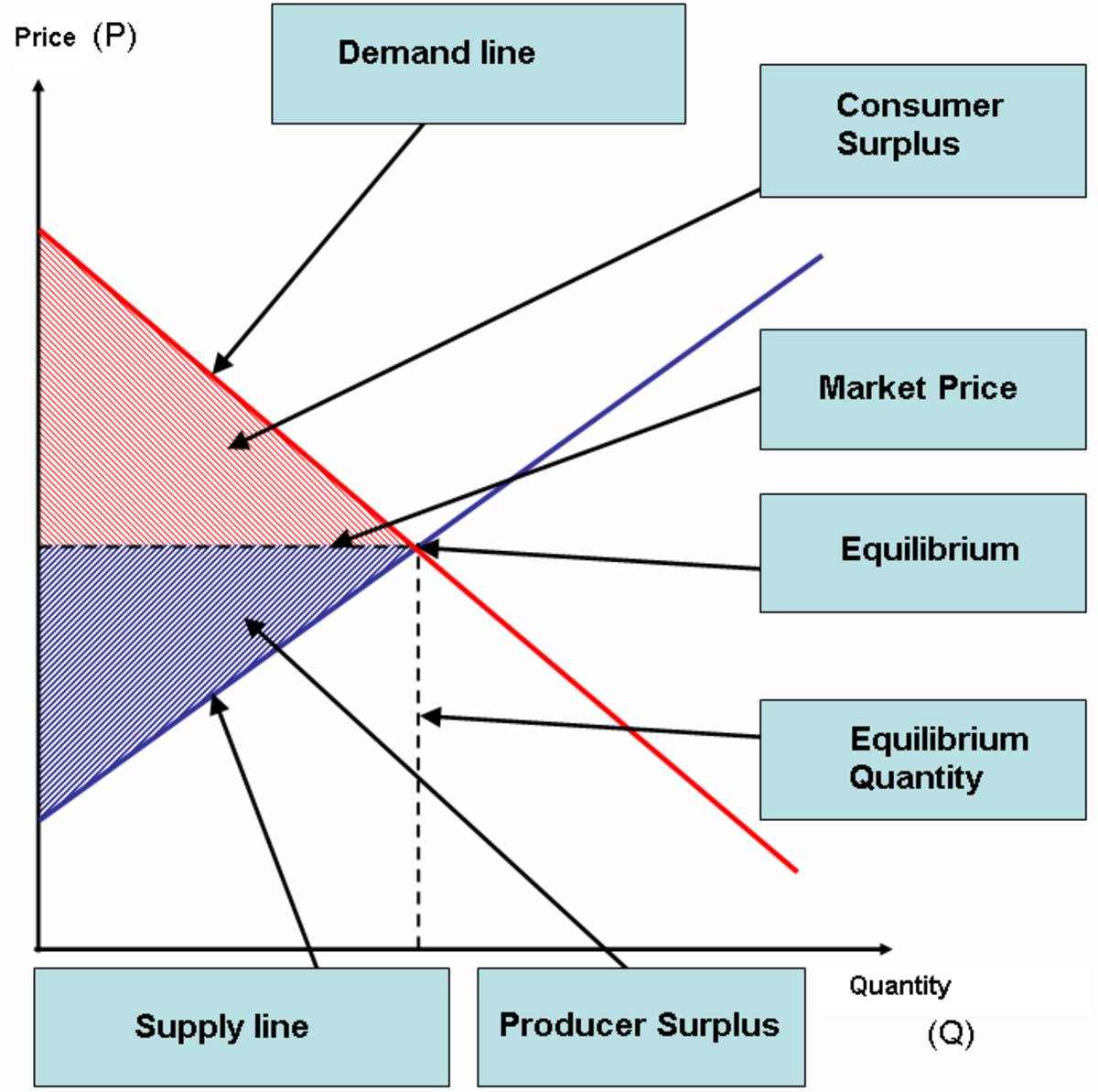Understanding the Free Market Through the World of Warcraft Economy

You Can Learn A Lot From a Video Game
The free market is a complex, multi-headed beast. So many different variables effect the ebbs and flows that it can be difficult to truly understand it. Muddying the water, every single 'free' market in the world has hundreds or even thousands of meddling influences preventing it from being a truly free market, from monopolies to government regulations.
A free market is any system in which the only forces regulating the market are those imposed by the market itself. Prices are set based on what the market will bear; supply is regulated by the number of people willing to pay the price for the good or service. In a truly free market, there are no barriers to entry, no artificial laws propping up or suppressing individual businesses or industries, and competition is completely free.
There's always been a good deal of debate about whether, as Adam Smith theorized, an "invisible hand" governs free markets. It's difficult to say using real-life examples, because there has never been and probably never will be a truly free market in the real world. Pundits argue back and forth about the merits of free markets, but in truth they're arguing without actual data. So how are we to understand how free markets do or do not regulate themselves?
Luckily, there is a way to understand how a truly free market might work. The economies in many different massively multiplayer role-playing games are an excellent example of a (virtual) free market, with few if any meddling influences. Since I'm most familiar with the World of Warcraft economy, I'll use it to illustrate how a perfectly free market might work in the real world.
Supply and Demand
Supply and demand are the most basic functions of a free market. An increase of supply leads to a decrease in price; an increase in demand leads to an increase in price. Theoretically, the balance between supply and demand leads to the ideal price for a good or service.
In practice, this doesn't always happen in the real world. Many different factors can conspire to keep prices artificially high or low. For example, a government might subsidize a good to make it cheaper. A pharmaceutical company with an exclusive patent might charge $50 a pill for something that costs $.03 to make. In the real world, there are many ways that prices can be set beyond supply and demand.
The World of Warcraft economy doesn't have any of these problems, allowing prices to truly be set by supply and demand. There is no government subsidizing certain goods. Additionally, for all but the most exclusive items, it's impossible to set up a monopoly. There are simply too many potential players in any one market, and it's impossible for any one player to prevent other players from entering the market.
Therefore, prices stabilize at certain levels. For example, on my server, inferno rubies sell for about 100g. They've been selling at 100g for months now, despite the fact that there are hundreds if not thousands of people buying and selling them. If anyone tries to sell the rubies for less than 100g, other players simply buy them up and relist them at 100g. If anyone tries to sell them for more than 100g, the rubies simply languish on the auction house until the auction expires.
Inferno rubies are a high-demand item, but they're also a high-supply item. They can be mined, prospected, transmuted, or obtained from items dropped in the Dragon Soul raid. As a red gem, they are in high demand by almost every class and role, except for tanks. Every player needs red gems, and every time they get a new piece of socketed gear they'll likely need red gems.
When patch 4.3 hit, the demand for inferno rubies shifted drastically. Prior to the patch, inferno rubies were the strongest red gems. They were selling for about 200g a piece. However, patch 4.3 introduced a stronger, more expensive red gem and added a new source of inferno rubies. The most hardcore players started using the more expensive gem, reducing demand for inferno rubies. After a period of volatility, prices settled down at about 100g.
Understand What People Are Buying
Sometime, people pay outrageous amounts for items that don't seem to be worth it. People pay hundreds or even thousands of dollars for name-brand items that have the same functionality as cheaper generic brands. Others throw money at simple projects that they could do themselves.
Players in World of Warcraft do the same thing. Rare pets - which don't have any function in the game besides looking pretty - sell for thousands of gold. Rare mounts can sell for even more. And simple craftable items, such as cut gems, enchants, and other cheap items, sell for much more than their raw materials. Why do people do this?
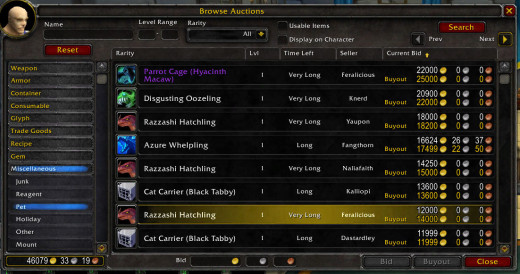

The secret is that they're not paying for what they seem to be paying for. The player who buys a rare mount or vanity pet isn't buying a mount. If the player was just looking for a fast flying mount, she could purchase one from a vendor for 100g. No, what the player is buying is the chance to be unique, to stand out from the crowd. Hiring a high-level raiding guild to get you Nightmare or the Life-Binder's Handmaiden is an acceptable investment for some people.
Others are buying convenience. For example, I make a good chunk of money selling Ebonsteel Belt Buckles. The materials to make them cost about 40g, and the recipe is easily obtainable. By the laws of supply and demand, these items should sell for barely more than the cost of the materials. And yet, I regularly sell them for 120g-200g, several times the cost of the materials. Why? Because people are lazy. Most people have a blacksmith alt that could make the belt buckles. But most people don't want to gather the materials, mail them to their blacksmith, switch over, craft the item, and mail it back to the character that needs the belt buckle. Rather than doing all of that, many people opt to just buy a belt buckle off the auction house.
What Governs the Cost of Complex Goods?
Pop quiz: What do wedding rings, watches, laboratory equipment, electrodes, and catalytic converters have in common?
Answer: They all contain platinum, making the cost of platinum a driving factor in the cost of these goods.
The costs of many goods are linked by their raw materials. The prices of these goods sets the baseline for the cost of a product or service in the absence of government subsidies. Under normal circumstances, no one would ever sell a product for less than the cost of the raw materials. So when you're decrying the cost of something, it's helpful to know why it costs that much to begin with.
Take the inferno rubies I talked about earlier. Why are they consistently priced at 100g?
Part of it, of course, has to do with the demand for the items themselves. However, a larger part is due to the cost of the materials to make these items. While some inferno rubies are mined or prospected, most inferno rubies are manufactured by alchemists. Transmuting one inferno ruby requires three carnelians (a cheap lower-quality gem) and three heartblossom (an herb that is gathered in Deepholm). If you add up the cost of three carnelians + three heartblossom, it usually comes out right about at the cost of an inferno ruby. This is acceptable for most players who make the inferno rubies, because most of them are transmute masters: Each time they transmute something, they have a 15% chance to create a duplicate. So even if the cost of the inferno rubies only just covers the cost of the raw materials, these players are still making a 15% profit.
Competition Really Does Impact Prices
In the real world, competition doesn't always have a direct impact on price. Laws may set the prices of goods; third parties might not allow fluid pricing; and competitors may collude to set prices.
In World of Warcraft, there is nothing stopping people from setting prices at whatever point they wish. Blizzard doesn't interfere in the economy directly, and with so many potential players on the market it's impossible for all suppliers of a particular type of good to conspire to artificially inflate prices. Given that, you'd expect to see that as the number of sellers of a particular good increases, the price decreases.
In fact, that is exactly what you do see. Blizzard usually releases several Bind on Equip items and epic-level crafting recipes with each new raid. In the first few weeks after a new raid is released, these items are hot sellers. Few people have access to these items yet, so the few that are put up on the auction house sell for exorbitant sums. As time goes on and more people acquire these items, the number of sellers increases and the price of the item decreases.
Before we go extolling the benefits of competition, there is a downside to competition's effect. Buyers don't know - or don't care - about the cost to produce a particular item. Buyers don't care whether the seller makes a profit on the sale. Extreme amounts of competition can squeeze all the profits out of a particular market.
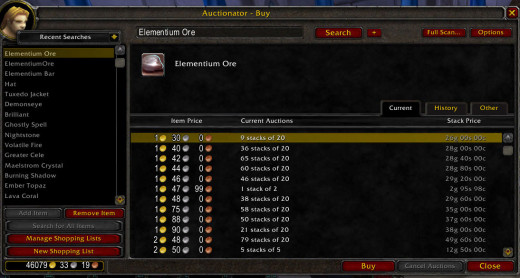
For example, Elementium Ore used to sell for about 5g per ore. However, the price it was selling for attracted more miners, who began mining more. As more players entered the market, they had to reduce their prices incrementally to ensure that their ore sold. A price war ensued, and now, even though many people have left the market because it simply isn't profitable enough, prices have sunk into the basement. These days, your time is better spent finding other ways to make money besides mining.
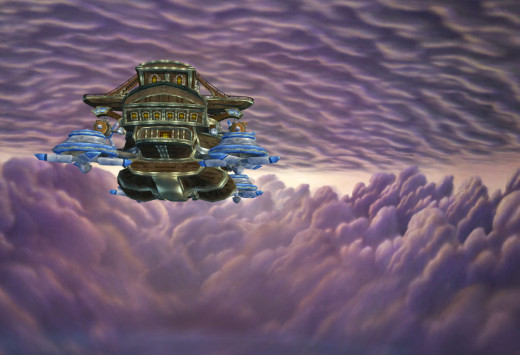
Go Forth and Sell
Free markets are a complex entity, and with all the interference it can be hard to tell what really goes on with them.
By studying the economy of World of Warcraft, we can get a better idea about what does and doesn't happen in truly free markets.


